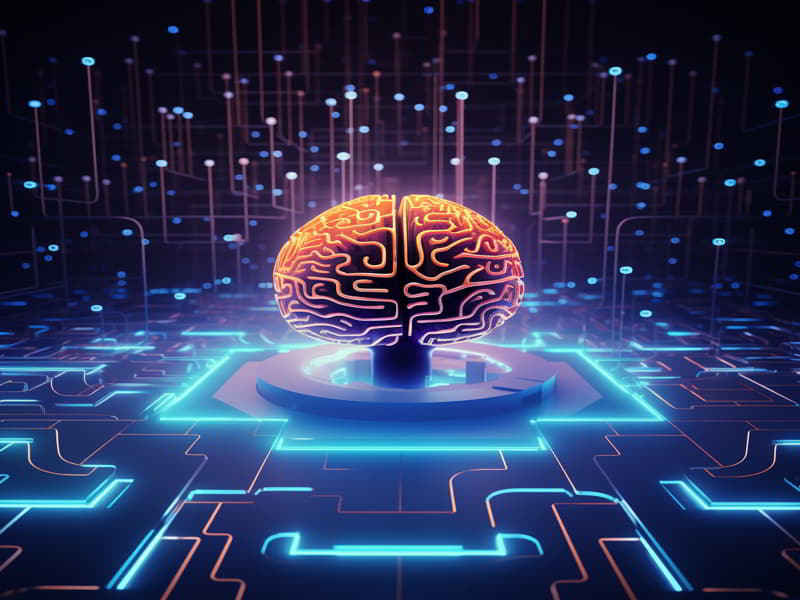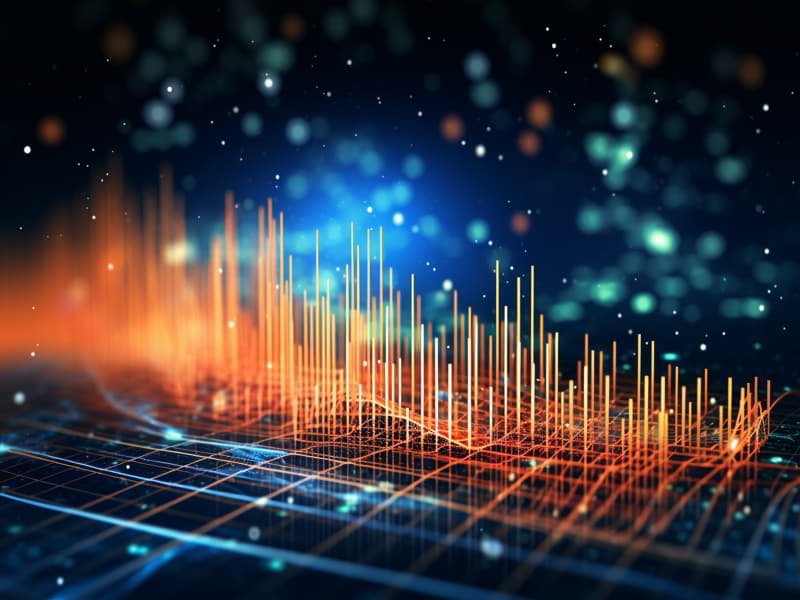Deep Learning Interview Questions
Deep Learning Interview Questions, an expanding field within artificial intelligence, has experienced exponential expansion over the last several years and now serves a variety of industries, including healthcare, finance and entertainment.
Given the increasing need for Deep Learning professionals, rigorous interview questions that assess candidates are necessary to gauge their skills and abilities accurately.
This site contains an expansive library of interview questions on Deep Learning, covering subjects such as neural networks, computer vision, and natural language processing.
Are You Preparing for Deep Learning Interviews or Assessing Candidates withThis Blog? Whether preparing for an upcoming job interview or searching for potential applicants as an employer
Whether as an Interviewee or Employer? This blog offers comprehensive information to meet all of your needs!
Our Deep-Learning interview questions and answers cover everything from fundamental principles to sophisticated methods, making this resource invaluable for enhancing one’s Deep-Learning capability or preparing for deep-learning viva questions.

1. What is Deep Learning?
Deep Learning is a method of automated extracting functional patterns from data with minimal human effort. It is based on optimising neural networks and using libraries like Python and TensorFlow.
2. In Deep Learning, what does a placeholder mean?
In Deep Learning, a placeholder promises to provide values later. It is used to evaluate a model on the training data.
They are used to modify the graph to obtain new outputs with the same input.
3. Could you please tell me how Deep Learning is being used?
Deep Learning has various applications in various fields, including self-driving cars, voice control assistance, automatic image caption generation, and automated machine translation.
It can capture images around a vehicle, process large amounts of data, and decide on actions to reduce accidents.
It can also be used to predict future behaviour and is being used to evolve in many fields.
4. Where does the idea of Deep Learning come from?
The motivation behind Deep Learning is to understand the behaviour of neuronal cells.
The goal is to develop intelligent software and systems that mimic human thinking, decision-making, and problem-solving.
5. In what ways do convolutional neural networks work?
The efficiency of convolutional neural networks is 98.8% out of 10,000 test samples, with an accuracy of 99%.
6. Which eight Deep Learning frameworks are considered to be the best?
The top eight Deep Learning frameworks are categorised based on efficiency, community, and ease of getting started.
The frame works are Chainer, Microsoft Cognitive Toolkit (now Microsoft Cognitive Toolkit), Cafe, MixNet, Java, Deep Belief Networks (DBN), PyTorch, and TensorFlow.
7. Tell me what generative adversarial networks are.
Generative adversarial networks are reinforcement Learning types that rank seven on a scale of 1 to 10. They are used to generate new data similar to a given dataset.
8. To what extent are Deep Learning and Machine Learning related?
Machine Learning is a subset of artificial intelligence that uses algorithms to learn from data and make predictions or decisions.
DeepLearning is a subset of machine learninginspired by the structure of the human brain and uses algorithms to learn features from data automatically.
9. As far as Deep Learning is concerned, what exactly are activation functions?
Activation functions translate inputs into outputs and use a threshold to produce an output. These functions include linear or identity, binary step, sigmoid, tanh, ReLU, and Softmax.
10. How does one go about training a Deep neural network?
The equation for Learning a Deep neural network is plus one, where T plus one is the revised rate, t is the old weight, and d is the desired output.
11. Where can I find examples of Deep Learning frameworks used by professionals?
Some Deep Learning frameworks used in the industry include TensorFlow, Cafe, Microsoft Cognitive Toolkit (CNTK), Pytorch, MXNet, Chainer, and Keros.
Tensors are multi-dimensional arrays that represent data having higher dimensions.
TensorFlow is the most popular Deep Learning framework due to its platform flexibility, auto differentiation capabilities, advanced support for threats, asynchronous computation, and customisable features.
12. What is the difference between machine Learning and Deep Learning?
The primary difference between Machine Learning and Deep Learning is that Deep Learning uses neural networks, making it suitable for handling large amounts of unstructured data. In contrast, machine Learning involves manual feature extraction.
13. Let me explain what Deep Learning neural networks are.
Neural networks are vital toDeep Learning and are designed based on the human brain. They simulate the human brain by combining billions of tiny cells called neurons.
14. With Deep Learning, what exactly is the activation function?
The activation function is an instantaneous function that increases the value of a variable. It is a popular choice for applications like classification and Deep Learning.
15. In what ways are Deep Learning, Machine Learning, and artificial intelligence interrelated?
Artificial intelligence is a broader concept, machine Learning is a subset, and Deep Learning is a subset of Machine Learning. Deep Learning is required for image recognition, processing analysis, and feature extraction.

Deep Learning Training

TensorFlow is an open-source library developed by Google for machine Learning and Deep Learning applications. It offers APIs for writing code in Python, C++, Java, and R. TensorFlow supports GPUs and CPUs, making it useful for Deep Learning tasks.
17. To what extent is TensorFlow useful for Deep Learning?
The training process for Deep Learning applications is computationally intensive, with extensive data sizes and iterative methods. TensorFlow supports GPUs and CPUs, making it faster for Deep Learning models.
The process involves building a computational graph, writing code to repair it, creating a session, and asking the session to execute the graph.
18. How can I learn about the TensorFlow object detection API?
TensorFlow object detection API is an open-source framework provided by TensorFlow that can quickly detect objects in images and videos. This robust framework is easy to use, even for those without Machine Learning or Deep Learning knowledge.
19. What is Keras?
Keras is the fastest-growing neural network or Deep Learning package used mainly by Microsoft Research, Netflix, and NASA. It offers user-friendly APIs, clear feedback, and modularity, making it easy to write code.
20. What is artificial intelligence (AI) and Deep Learning?
AI is the ability of machines to imitate human intelligence and perform tasks that typically require human intervention. Deep Learning is a subset of AI that uses neural networks with multiple layers to learn and extract hidden patterns and features from data.
21. In what ways does healthcare make use of AI and Deep Learning?
AI and Deep Learning are transforming the health care industry by providing new possibilities to improve people’s lives.
Medical imaging uses Deep Learning to detect and diagnose diseases more accurately and efficiently.
It is also used in drug discovery and development to identify new treatments and drugs.
22. Where do you see AI and Deep Learning implemented in the entertainment industry?
AI and Deep Learning are used in the entertainment industry to provide personalised recommendations and experiences to users.
For example, Netflix, Amazon, and Vivo use Deep Learning to recommend content based on users’ viewing history and preferences.
IBM also uses DeepLearning to analyse player emotions and expressions in sports, providing users with personalised highlights and insights.
23. For what purposes do artificial intelligence and Deep Learning contribute to creating new sounds and music?
AI and Deep Learning are used in music and audio generation to create new compositions and improve sound quality.
Voice and audio recognition technology train Deep Learning networks to produce music compositions.
Google’s wavelet and profound speech can teach computers to learn patterns and statistics unique to music, generating new compositions.
24. So, how exactly do robots use AI and Deep Learning?
AI and Deep Learning are used in robotics to create robots that perform human-like tasks. These robots are trained to understand the world around them and make better decisions without supervision.
They can be used in various industries, including manufacturing, healthcare, and transportation.
25. When creating captions for images, how do AI and Deep Learning factor in?
AI and Deep Learning are used in image caption generation to generate captions for images automatically. For example, Google Photos uses Deep Learning to detect objects in photographs and turn labels into coherent sentences.

Deep Learning Online Training

AI and Deep Learning are being used in advertising to optimise user experiences, increase the relevancy of ads, and boost advertising campaigns. They can reduce costs by dropping the cost per acquisition from sixty to thirty dollars, creating data-driven predictive advertising, real-time bidding, and target display advertising.
27. Explain how earthquake predictions employ AI and Deep Learning.
AI and Deep Learning are used to predict earthquakes by analysing data from seismometers and other sensors. Scientists use Deep Learning algorithms to identify patterns and anomalies in the data, which can be used to predict earthquakes with higher accuracy.
28. In artificial intelligence, what are neural networks, and what do they do?
Neural networks are human-inspired systems that are used to train DeepLearning models. They comprise input, hidden, and output layers, with neurons performing various operations.
Neural networks are used in multiple Deep Learning algorithms, including CNN, RNN, and JN, to classify data and extract hidden patterns and features.
29. Describe some typical neural network topologies and explain how they function.
Multi-layer perceptron (MLP) is a Deep Learning algorithm that uses a neural network framework to classify non-linear classes.
It has an input, hidden, and output layer with neurons called nodes performing various operations.
The input layer uses a non-linear activation function, while the hidden layer adds weights and numbers to the input layer.
The output layer uses back propagation for training, which takes the error it sees and sends it backwards.
30. What is Epic and TensorFlow?
Epic is a Deep Learning library representing one iteration over the entire data set, divided into batches.
TensorFlow is the most preferred library in Deep Learning due to its compatibility with both C++ and Python APIs, faster compilation time, and support for both CPUs and GPUs. Tensors are mathematical objects represented as arrays of higher dimensions, fed as input to the neural network.
“Enhance your readiness for your upcoming Deep Learning interview by utilising our extensive compilation of multiple-choice questions. These interview questions for deep learning encompass various subjects, including neural networks, computer vision, and natural language processing.”
1. What is Deep Learning?
a) Technique for automatically discovering patterns in data
b) Subset of Machine Learning that uses neural networks
c) System for categorising and arranging data
d) Method of training computers to recognise images
Answer: a) Technique for automatically discovering patterns in data
2. When did the history of neural networks start?
a) 1940s
b) 1950s
c) 1960s
d) 1970s
Answer: a) 1940s
3. What is the purpose of Deep Learning?
a) Enable machines to learn from data without human intervention
b) Simulate the human brain’s structure and function
c) Create systems and software that imitate human behaviour
d) Solve complex problems with minimal human supervision
Answer: d) Solve complex problems with minimal human supervision
4. What are GANs?
a) Type of neural network architecture that learns from data without human intervention
b) Method of training computers to recognise images
c) Subset of Deep Learning that uses convolutional neural networks
d) Method of organising data and labelling it
Answer: a) Type of neural network architecture that learns from data without human intervention
5. What is the purpose of TensorFlow?
a) Allow computers to learn from data automatically
b) Model the human brain’s anatomy and physiology
c) Design software and systems that replicate human behaviour
d) Provide Deep Learning APIs and technologies
Answer: d) Provide Deep Learning APIs and technologies
6. What is Deep Learning used for?
a) Emulate human behaviour in systems and software
b) Learn from data autonomously
c) Solve complex problems without human oversight
d) Make data learning machines work like the brain
Answer:d) Make data learning machines work like the brain
7. What is semi-supervised Learning?
a) Computer image recognition training
b) Self-Learning neural network architecture
c) Convolutional neural network subset of Deep Learning
d) Data organisation and labelling
Answer: a) Computer image recognition training
8. What is reinforcement Learning?
a) Approach to data organisation and labelling
b) Branch of Deep Learning utilising convolutional neural networks
c) An architecture for neural networks that can learn from input automatically
d) Technique for teaching computers to identify pictures
Answer: a) Approach to data organisation and labelling

9. What is the purpose of Autoencoders?
a) Automate machine Learning from data
b) Model the anatomy and physiology of the human brain
c) Design hardware and software that mimic human behaviour
d) Isolate relevant elements and find solutions to complex problems
Answer: d) Isolate relevant elements and find solutions to complex problems
10. What is the purpose of TensorFlow object detection?
a) Extract visual features from variable-sized images
b) Recognisethe detection and localisation of multiple objects within an image
c) Train a model using Deep Learning to extract features such as edge detection, higher features, and facial recognition
d) Reduce the size of images to a fixed set of visual features using pre-trained image classification models
Answer: b) Recognise the detection and localisation of multiple objects within an image
11. What is the role of pre-trained image classification models in object detection frameworks?
a) Identify and localise objects in photos
b) Apply DeepLearning to extract features like edge detection, higher features, and facial recognition
c) Extract visual features from images of different sizes
d) Compress photos using predetermined visual characteristics
Answer: a) Identify and localise objects in photos
12. What is the purpose of the chatbot creation process?
a) Determine the bot’s role
b) Set goals
c) Create the conversational architecture
d) All of the above
Answer: d) All of the above
13. What is the relationship between machine Learning and artificial intelligence?
a) Machine Learning is a subset of artificial intelligence
b) Artificial intelligence is a subset of machine Learning
c) Machine Learning and artificial intelligence are unrelated concepts
d) None of the above
Answer: a) Machine Learning is a subset of artificial intelligence
14. What is the goal of gradient descent in Deep Learning?
a) Maximise the cost function
b) Minimise the cost function
c) Iteratively move in the direction of the negative of the gradient as defined by the old weight and desired output
d) Compute functions on weighted inputs and provide an output
Answer: b) Minimise the cost function
15. What is the purpose of the post-up Tron algorithm?
a) Initialise weights and threshold
b) Provide input and calculate output using activation functions
c) Update weights
d) All of the above
Answer: d) All of the above
16. What is the purpose of the cost function in Deep Learning?
a) Measure the accuracy of a neural network concerning a given training sample and expected output
b) Compute functions on weighted inputs and provide an output
c) Iteratively move in the direction of the negative of the gradient as defined by the old weight and desired output
d) None of the above
Answer: a) Measure the accuracy of a neural network concerning a given training sample and expected output
17. What is the purpose of the computational graph in TensorFlow?
a) Improve computing performance, depict a series of TensorFlow operations as nodes in a graph.
b) Stand in for the model that is exclusively transferable between nodes
c) As a representation of the session-limited model
d) None of the above
Answer: a) Improve computing performance, depict a series of TensorFlow operations as nodes in a graph.
18. What is the purpose of the convolutional neural network (CNN) in DeepLearning?
a) Examine pictures and videos
b) Read and understand written material
c) Evaluate spoken language
d) None of the above
Answer:a) Examine pictures and videos
19. What is PyTorch?
a) Deep Learning framework for developing neural networks
b) Machine Learning library for natural language processing
c) Computer vision tool for detecting objects in images and videos
d) Neural network development tool for generating music compositions
Answer: a) Deep Learning framework for developing neural networks
20. What is Theano?
a) DeepLearning-based neural network methodology
b) Natural language processing machine Learning library
c) Computer vision tool for image and video identification
d) Music composition neural network system
Answer: b) Natural language processing machine Learning Library

Conclusion
Deep Learning is a complex field with rapid developments; to prepare for job interviews in this sector, you must have a firm grasp of its principles and technology.
Our blog on Deep-Learning interview questions is an indispensable resource for individuals looking to broaden their understanding and prepare for an upcoming advanced deep-learning interview question.
Our blog covers numerous Deep Learning concepts, ranging from fundamental ones like neural networks and back propagation to more intricate ones such as convolutional neural networks and recurrent neural networks.
All are designed to increase your chances of success as an adept Deep-Learning specialist.
No matter your expertise level, our deep-learning interview questions for experienced blogsare designed to be indispensable assets in that quest!
GoodLuck!

Deep Learning Course Price


Prasanna
Author